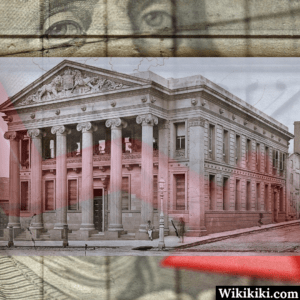Bank failures have been a recurring theme throughout the history of the United States. From the Panic of 1819 to the Great Recession of 2009 and the COVID-19 pandemic, various economic events have caused banks to fail at high rates.

Fortunately, the losses associated with bank failures are no longer a threat to individuals and businesses that secure adequate FDIC coverage for their funds.
Bank Failures: The Panic of 1819
The history of bank failures in the United States begins with the Panic of 1819. This crisis occurred just over 40 years after the Declaration of Independence was signed.
The aftermath of the Napoleonic Wars led to global market adjustments that tossed the United States into its first financial crisis.
England and France had been fighting for centuries, and the United States reaped the benefits by supplying agricultural products to both feuding countries. When they stopped fighting, the demand for U.S. products tumbled.
To compound the effects of this crisis, rampant speculation in public lands fueled by loose issuance of paper currency by governments drove the economy into a tailspin that persisted through 1821.
During this crisis, the Second Bank of the United States (SBUS) the successor to the First Bank of the U.S. was heavily impacted and began reducing the credit it made available to state-chartered banks. Without this flow of funds, state-chartered banks began to collapse.
The FDIC had not yet been created at this time, so when a bank failed, its customers lost their deposits. This led to runs on banks, which led to more bank failures.
Despite the government’s efforts to curtail the damage, many farmers lost everything. This crisis led to several state-chartered bank failures and paved the way for Andrew Jackson to close the SBUS in 1833.
The Panic of 1837
The financial crisis of 1837 was triggered by the speculative bubble in land prices and the overproduction of cotton.
The Bank of England’s decision to raise interest rates also contributed to the crisis by causing a contraction in credit.
The panic began when New York banks suspended payments in specie (gold or silver), leading to a general loss of confidence in the banking system.
During this time, state-chartered banks were issuing banknotes with little to no regulation, leading to an oversupply of paper money and subsequent inflation.
Many banks failed as a result, and the panic spread throughout the country, leading to widespread unemployment and bankruptcy.
The government’s response to the panic was to create the Independent Treasury System, which allowed the government to hold its funds in its own vaults rather than depositing them in private banks. This helped to stabilize the financial system and prevent bank failures in the future.
The Great Depression
The most significant and well-known bank failure in the history of the United States occurred during the Great Depression.
The stock market crash of 1929 triggered a wave of bank runs as depositors rushed to withdraw their funds from banks that had invested heavily in the stock market. As banks failed, the Federal Reserve System was slow to respond, exacerbating the crisis.
By 1933, one-third of all banks in the United States had failed, and depositors had lost over $140 billion (equivalent to over $2 trillion in 2023 dollars).
President Franklin D. Roosevelt responded with the Emergency Banking Act, which closed all banks temporarily to allow the government to inspect their books and ensure their solvency.
The act also established the FDIC, which insured deposits up to $5,000 per account. The FDIC has since been expanded and now insures deposits up to $250,000 per account.
Its establishment has helped to prevent bank failures from causing widespread financial harm to individual depositors and the economy as a whole.
















+ There are no comments
Add yours